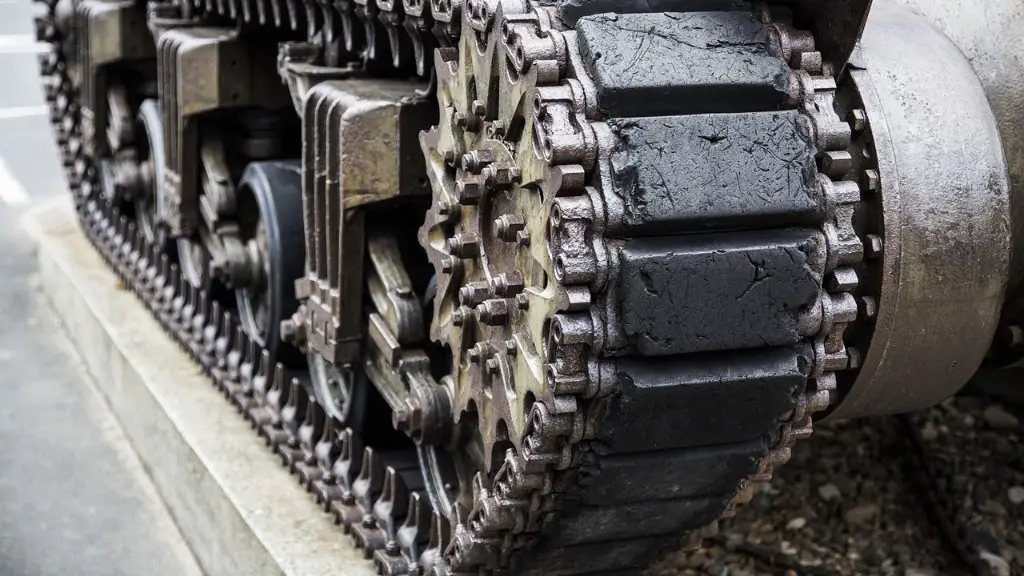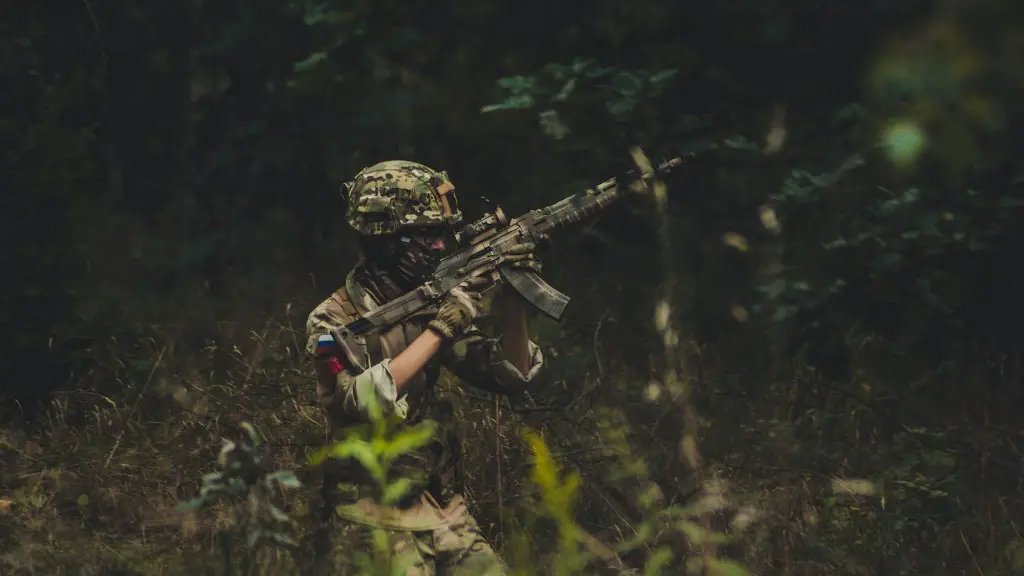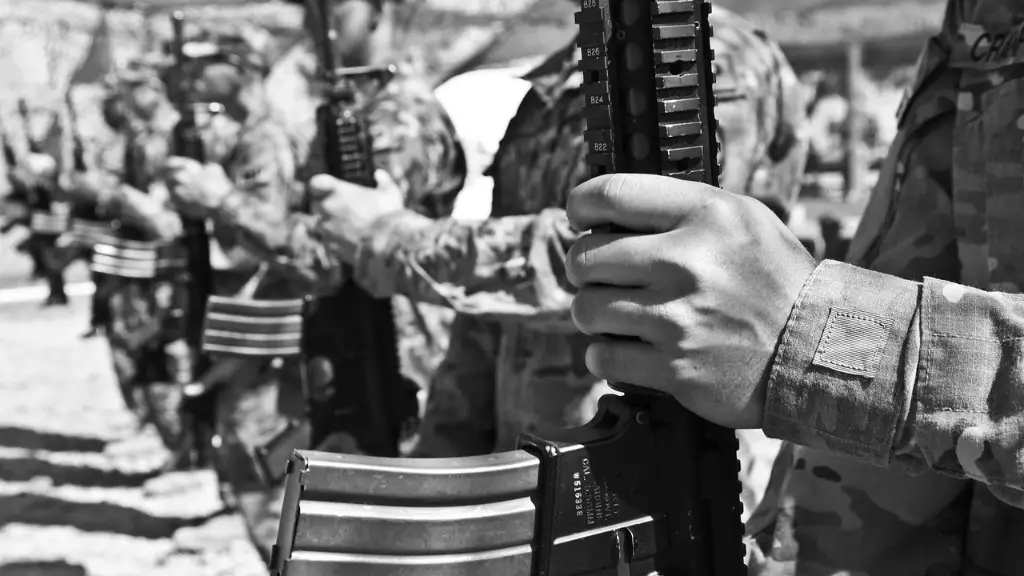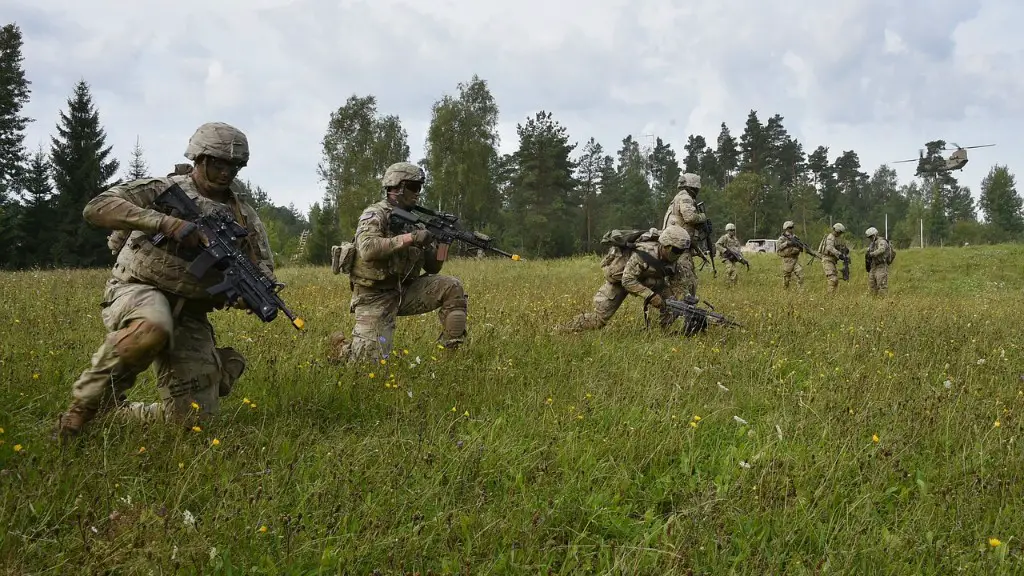The Chinese People’s Liberation Army (PLA) is the collective armed forces of the People’s Republic of China. Established in the late 1940s, the PLA has its roots in the National Revolutionary Army, a disparate military force of former Kuomintang and People’s Revolutionary Army forces that became the major component of the PLA after the Chinese Civil War. Both its active and reserve components have grown tremendously since its formation, and it has consistent rated as one of the world’s largest military forces. It has been actively involved in major Chinese military activities, taking a key role in defending the nation from external threats and conducting operations to cement the Chinese government’s control over its internal environment. This article seeks to provide an overview of the Chinese Army’s key capabilities, its role in the Chinese state, and some of the various operations it conducts.
Chinese Army Size
The PLA is an immense military force, being the largest active duty armed force in the world. Its active duty personnel composition estimated at over two million soldiers, sailors, and airmen, while its reserve component adds an additional 500,000 soldiers. It also possesses the second largest tank force in the world, consisting of over 6,000 tanks, followed by a significant fleet of warships and combat aircrafts. Moreover the PLA also operates a range of logistical and support units, most notably its national cyber-security forces and its satellite and surveillance systems.
Chinese Army Equipment
The PLA’s arsenal is also notable for its production capacity and technological sophistication. It has been steadily modernizing its equipment from the late 1980s, transitioning from pre- and post-Cold War platforms towards more modern equivalents. This is an ongoing process, with the PLA having recently showcased a range of new generations of tanks, aircrafts and destroyers that have the potential to be the most capable military equipment in Asia. It has also produced a range of missiles, ranging from short-range ballistic missiles to anti-ship missiles and cruise missiles.
Chinese Army Deployment
The main mission of the PLA is to defend China from external threats, and it has historically taken a particularly strong stance against any potential attempt to interfere with the country’s sovereignty or its territorial integrity. This same task has been made more complex in recent years, however, with the PLA increasingly conducting operations against non-state actors, providing support to the Chinese nation’s claims in disputed territories such as on the Tibet-Bhutan border. In addition, the PLA is also becoming increasingly prominent in disaster relief and peacekeeping operations, deploying personnel to troublespots around the world in order to provide assistance.
Chinese Army Doctrine
One of the core features of the PLA is its dedication to the Chinese Communist Party’s core ideological principles. This includes a commitment to the doctrine of “limited warfare,” which emphasizes the PLA’s mission as being largely defensive in nature and the importance of avoiding large-scale and sustained conflict in the event of a military conflict. Moreover, the PLA stresses the importance of military planning and efficient decision-making and has sought to develop a doctrine of “responsive” warfare, in which the PLA would be able to respond rapidly and comprehensively to a variety of potential threats.
Chinese Army Training
The PLA emphasizes the importance of training, having developed a substantial training regime that seeks to ensure that its soldiers are well-prepared for any eventuality. This includes a variety of programs designed to develop competencies in infantry, mountain warfare, air combat and naval warfare. The PLA also operates its own training facilities, such as the prestigious National Defense University located in Beijing. Moreover, the PLA has also sent a number of its personnel to participate in campaigns and peacekeeping missions overseas, providing opportunities for officers to gain valuable experience in leading operations.
Chinese Army Budget
The PLA is one of the best-funded militaries in the world, with its 2019 budget estimated to be around $230 billion. This figure is evidenced by the scale and scope of its modernization efforts, as well as its willingness to invest in long-term research programs and large purchases of modern military equipment from other countries. Moreover, the PLA’s budget includes significant amounts of funding for training and the operation of its various facilities.
Chinese Army Relationships
The PLA has sought to maintain close diplomatic and military ties with other major powers, in particular with Russia. This is evidenced by the numerous joint exercises that the two countries have conducted in recent years and the close operational cooperation between the two militaries. The PLA has also sought to pursue arms deals and expand military-to-military relationships with other countries in the region, most notably with India and Pakistan.
Influence of Chinese Army on Chinese Society
The PLA also plays a key role in Chinese society, acting as a major source of both national pride and cohesion. It is viewed as a symbol of the country’s power, with citizens often viewing it in terms of national defence. Its presence at official events is also a sign of the government’s dedication to the security of the nation, while the presence of PLA personnel in local communities helps to foster a sense of unity and support.
Chinese Army in the International Arena
The PLA also plays an important role on the international stage, acting as a major aid provider and contributor to international missions. It has been involved in numerous United Nations peacekeeping missions since the 1980s and it has also established an active network of contacts with other militaries around the world, contributing to joint exercises, such as those held with the Indian Navy, and the formation of multi-national defense alliances, such as the Shanghai Cooperation Organisation. This has also been further bolstered in recent years as the PLA has sought to project a more outward-facing image of itself.
Chinese Army Controversies
The PLA’s role in Chinese society has not been without controversy, particularly in regards to its actions in adversarial situations. Numerous reports have accused the PLA of committing human rights abuses and other violations in China, while its military presence in disputed territories such as Tibet and the South China Sea has been met with widespread criticism. Moreover, the PLA has become increasingly active in the cyber arena in recent years, prompting concern over potential violations of international law and digital espionage.
Chinese Army and Modernisation
The PLA continues to undergo a comprehensive process of modernisation, making strides towards becoming an increasingly capable military force. This has included overhauls of its training programmes, procurement strategy and the introduction of new technology into its arsenal. These efforts have enabled the PLA to respond more effectively to the many challenges that it faces, and have been instrumental in enabling the PLA to better fulfil its role of defending the nation and its people.
Chinese Army and US Relations
The Chinese military has a complicated relationship with the United States and other Western countries, which has become increasingly strained in recent years. US-China relations have been clouded by mutual distrust and a range of geopolitical and economic issues, with the PLA steadily increasing its presence in contested regions such as the South China Sea. The US and its allies have expressed their concerns over this expansion, with the US Navy continuing to conduct Freedom of Navigation operations in the region in a bid to demonstrate its commitment to maintaining open seas.
Chinese Army and Technology Development
The PLA has also made significant investments in military technology, focusing its efforts on boosting the capabilities of its armed forces. This has included efforts to develop more advanced missile systems, improve battlefield surveillance and reconnaissance capabilities, and modernise its fighter aircraft. The PLA has also been actively exploring artificial intelligence and robotics for potential military applications, with experts warning that the Chinese military could become the most advanced in the world should these efforts prove successful.



